This article has been reviewed according to Science X's editorial process and policies. Editors have highlighted the following attributes while ensuring the content's credibility:
fact-checked
trusted source
proofread
Car fumes, weeds pose double whammy for fire-loving native plants
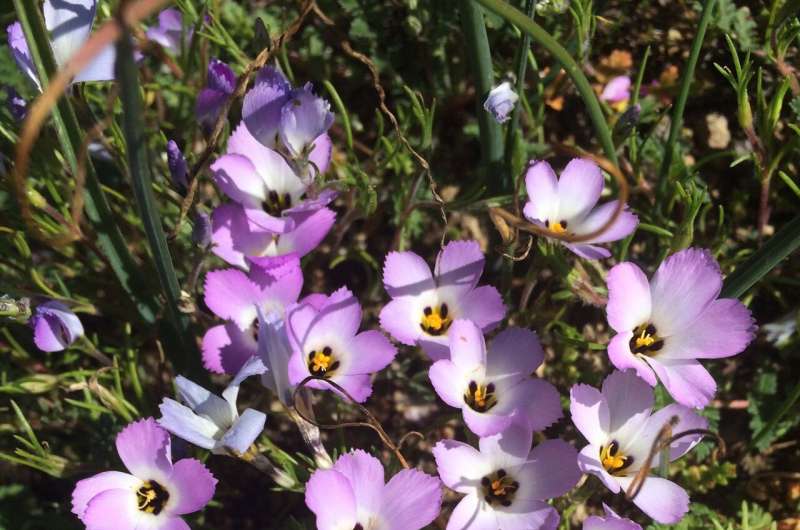
Springtime brings native wildflowers to bloom in the Santa Monica Mountains, northwest of Los Angeles. These beauties provide food for insects, maintain healthy soil and filter water seeping into the ground—in addition to offering breathtaking displays of color.
They're also good at surviving after wildfire, having adapted to it through millennia. But new research shows wildflowers that usually would burst back after a blaze and a good rain are losing out to the long-standing, double threat of city smog and non-native weeds.
A recent study led by Justin Valliere, assistant professor in the UC Davis Department of Plant Sciences, has found that native wildflowers and other plants that typically flourish following a fire were instead replaced by invasive plants on land that received the kind of nitrogen contained in vehicle emissions.
The work appears in Global Change Biology.
"Many native plants in fire-prone areas rely on fire, and some are entirely dependent on it. Some are even most abundant after a fire," Valliere said. "But we found that these fire-following species may be especially vulnerable to the combination of nitrogen pollution and invasive plants."
That's part of the reason native plants in these mountains have been declining.
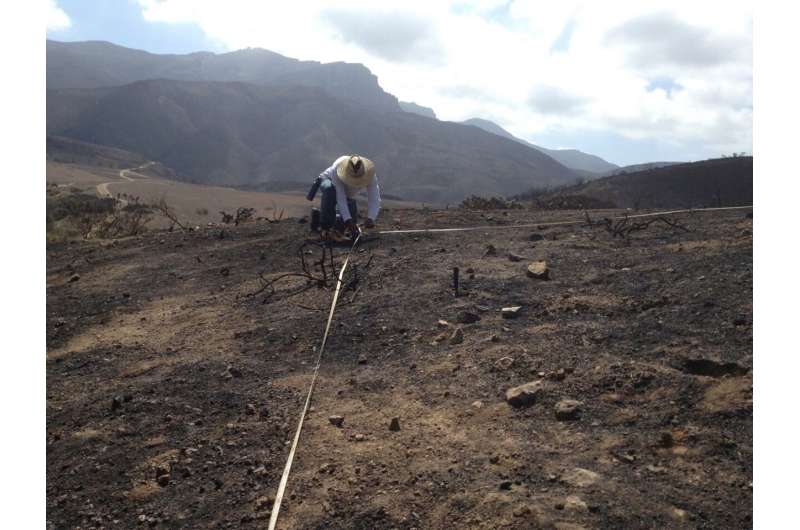
Seeds banked, waiting to sprout
The problem faced by native plants can be likened to a drawn-down bank account: Funds withdrawn are not being replaced.
It starts with fire, an important ecological process, Valliere said. Flames burn through plants on the surface and return their nutrients to the soil. Seeds sleeping in the ground wait for the next rain to sprout, then use those nutrients to grow.
"Plant diversity is often highest in growing seasons immediately after a site burns," he said.
But invading plants have many advantages over native ones. They often sprout earlier, grow faster and create more seeds, all while tolerating drought.
"They're like cheaters," Valliere said. "They don't follow the same rules."
Nitrogen, too, is an important piece of every plant's nutrition. They get a fertilizing boost from nitrogen that floats up in vehicle emissions and falls to the ground. But the invaders use nitrogen and other nutrients to grow faster, winning the race for water and sunlight. As a result, fewer native plants reach maturity, producing fewer seeds that keep their populations thriving.
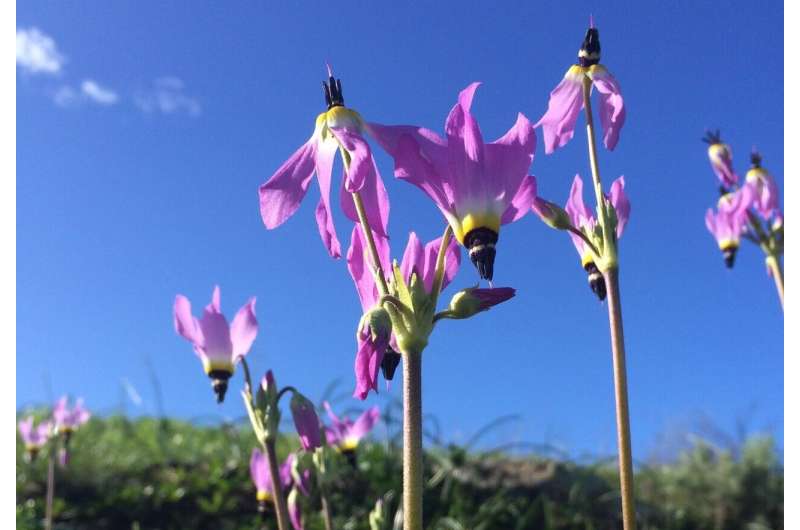
When the account balance reaches zero
The 2013 Springs Fire gave Valliere a unique opportunity to study the combined impacts of wildfire and extra nitrogen. He and colleagues from UC Riverside and the National Park Service created test plots in the Santa Monica Mountains where the fire had burned. Then, they added nitrogen to the soil to mimic the amount and type that L.A.'s smog would deposit. Over the study's three years, native plants that typically would have flourished after wildfire instead declined even faster in the plots with added nitrogen.
Native seeds sprouted but didn't flower. Over time, the soil's bank of seeds drew down.
"Each seed has one chance to flower and reproduce," Valliere said. "If a seed grows and gets outcompeted, that seed has lost its chance to replenish the seed bank."
Without the chance to replenish their bank account, native plants will die out, and the ecosystem will be thrown out of balance.
-
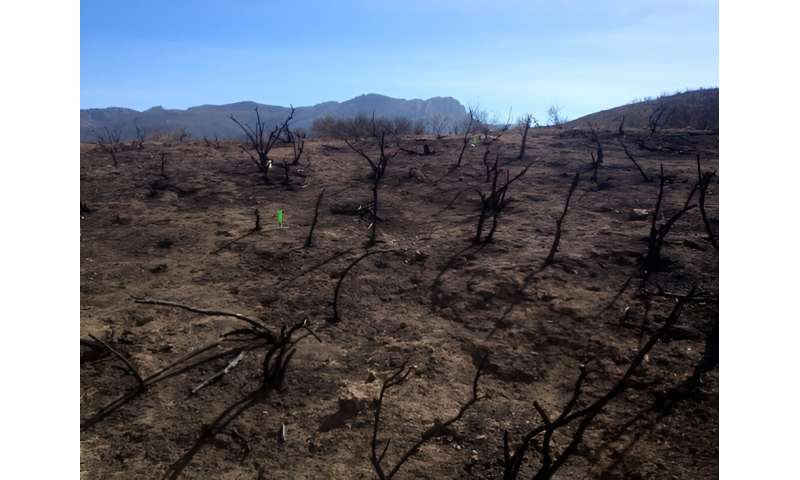
After the Springs Fire in 2013, scientists led by Justin Valliere of UC Davis studied how invasive weeds and air pollution impact the resurgence of native plants that usually flourish after a wildfire in the Santa Monica Mountains. Credit: Justin Valliere/UC Davis -
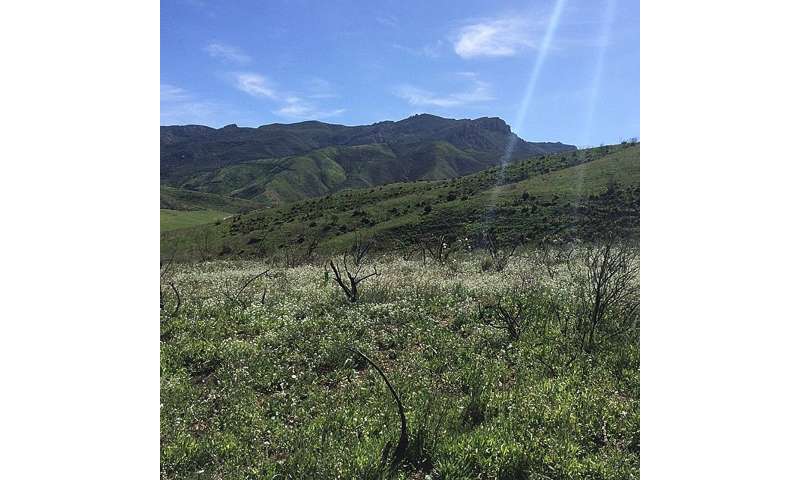
In spring of 2015, the area burned by the 2013 Springs Fire was again in bloom. The clearwater cryptantha shown here blooms all over California, but is especially abundant in the coastal south. Credit: Justin Valliere/UC Davis
"There is inherent value in biodiversity," Valliere said. "These invasive weeds could prevent the re-establishment of native shrubs after fire, sometimes forever altering the plant community."
The loss of native plants can have cascading effects on the larger environment. Problems can include the loss of native bees that feed on the flowers, and mudslides when rain makes hillsides unstable.
In similar areas where biodiversity flourishes after wildfires—including parts of the Mediterranean basin, southern Africa and Australia—air pollution also threatens native vegetation.
The addition of city smog "could have serious consequences for the biodiversity of fire-prone ecosystems worldwide," Valliere warned.
Co-authors include Irina Irvine of the National Park Service and Edith Allen of UC Riverside.
More information: Justin M. Valliere et al, Nitrogen deposition suppresses ephemeral post‐fire plant diversity, Global Change Biology (2024). DOI: 10.1111/gcb.17117
Provided by UC Davis



















